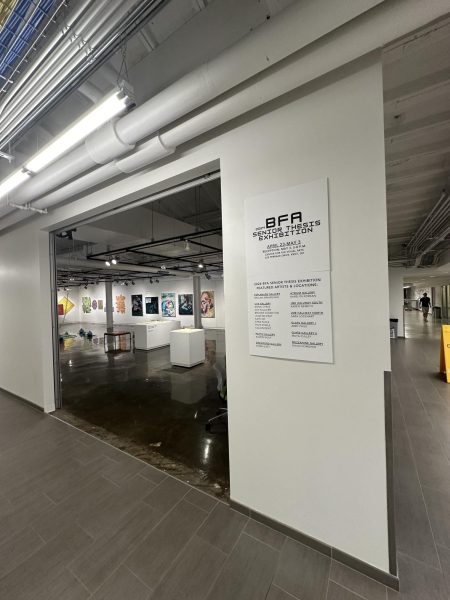Graduate student looks at design from unique perspecitve
March 2, 2016
Kent State graduate student, Forrest Paige, is creating a unique project in his architecture program. The project identifies the aspects of parkour when the runners actively approach urban space and design.
According to Merriam-Webster, parkour “is the sport of traversing environmental obstacles by running, climbing, or leaping rapidly and efficiently.”
“What a hyper able person is, is someone who uses space in an unconventional way,” Paige said.
Associate Professor Bill Willoughby, said that architecture gives society various clues as to how to use and interact with the space and architecture around them.
“As opposed to walking around this obstacle, they could walk right over it,” Willoughby said. “Because parkour is the art of moving through space quickly.”
That’s the notion that Paige is trying to convey in this project. He is focusing on how architecture and design can be manipulated in a manner that is more unique and thought-provoking. One of the ways he is trying to spark thought is by using an ordinary, everyday box.
Paige said the purpose of the box was to act as an investigation for his project to see how people would interact with it.
“The box is basically challenging how we use an object and how we see an object,” Paige said. “So the box itself is nothing more than a box, but what I did were paint hands and feet on it so that it would push at peoples imagination.”
With this project Paige is working on, Willoughby feels it will challenge individuals and the way that people think about their environments around them.
Erik Hartung, a master’s candidate of ecology and biology, as well as a good friend of Paige, said that Paige wants to mold the concept of parkour with architecture and design. He also wants people work that into the way people experience the architecture around them.
“He sees why people choose different urban spaces to interact with,” Hartung said.
Along with writing a paper and creating a film, Paige intends to create deployable parkour parks.
“Basically, it’s building parkour parks that take these elements from the city and combined them into one structure,” Paige said. “Then, those structures could be demounted and built in different places.”
Paige has encountered some barriers with this project, however.
“Where Paige is having a lot of trouble is how he’s defining hyper able people,” Hartung said. “(Also), his professors were asking why should he design for hyper able people.”
Despite that encounter, Paige has been able to overcome the obstacles by explaining to his professors that this project will be about the way people interact and highlight the architecture around them.
“Instead of defining a hyper able person, I switched it to hyper normative, and it became less about the person and their body and more about how people use the actual space,” Paige said.
It’s that thought-provoking idea that sparked the project for Paige. The different perspective and how people interact with the architecture.
When Paige realized what he wanted his project to be about, he was at a playground in London, England, with a bunch of kids and a monument near by.
This is what inspired me to do this in the first place,” Paige said. “Well, also because I’ve been doing parkour for so long.”
“There was this one playground called Queen Elizabeth’s Olympic Park and so while I was in London, I went to the playground because we were looking at the architecture of the Olympic Stadium,” Paige said. “It was one of the coolest playgrounds you could ever imagine and next to the playground, there was this monument. I decided to climb up on it and slide down.”
Soon enough, the kids that were occupied with the playground were now more occupied with this monument because it was a new place for them to play on. It’s that perspective that Paige is trying to open up.
“Paige will be thinking about buildings, not just by ‘how will I make them work,’ but ‘how will I make them work and cause people to imagine their use in new ways,’” Willoughby said. “His goal is to make these architectures thought provoking.”
Adrian Leuthauser is the CAED reporter for The Kent Stater, contact him at [email protected]






















